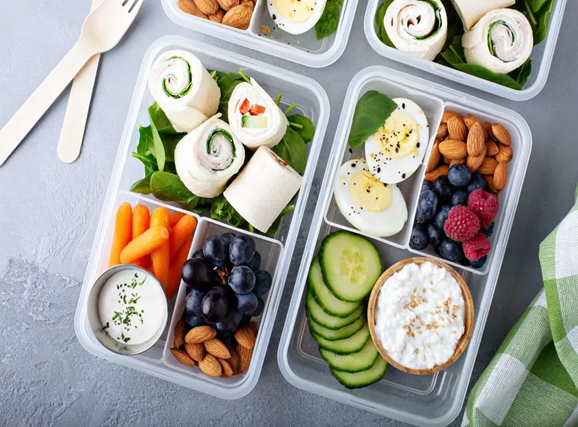Breastfeeding
can be challenging whether as a first-time mom or an experienced mom. But
remember, the benefits it offers to your newborn and you out-ways
the challenges. Many women face different breastfeeding problems while others
do not and each breastfeeding journey is quite different from another. In any
of the challenges facing, remember you are not alone.
Some of the challenges include;
Low milk production
This is when your breasts do not make enough milk to meet the
nutritional needs of your baby and a range of factors may be responsible for this challenge.
What to do
- Make sure your baby is
latched on and positioned well.
- Breastfeed often and let
your baby decide when to end the feeding.
- Offer both breasts at each
feeding and have your baby stay at the first breast if he or she is still
sucking and swallowing. Offer the second breast when the baby slows down
or stops.
- Avoid giving your baby
formula or cereal in addition to your breastmilk in the first few months
of life. Your baby may lose interest in breastmilk which can decrease milk
supply.
Plugged ducts
They are common in
breastfeeding mothers. A plugged milk duct feels like a tender and sore lump in
the breast. A plugged duct happens when a milk duct does not drain properly.
Pressure then builds up behind the plug, and surrounding tissue gets inflamed.
A plugged duct usually occurs only in one breast at a time.
What to do
- Breastfeed on the side with a plugged duct as often as every two hours. This will help loosen the plug and keep your milk moving freely.
- Massage the area, starting behind the sore spot. Move your fingers in a circular motion and massage toward the nipple.
- Use a warm compress on the sore area.
- Wear a well-fitting,
supportive bra that is not too tight, since a tight bra can constrict milk
ducts.
- If you have plugged ducts that keep coming back, get help from a lactation consultant.
Nursing strike:
A nursing "strike" occurs when a baby suddenly refuses to nurse for no apparent
reason. It occurs most often in babies older than 3 months of age. Do not stop breastfeeding because self-weaning
is more gradual than sudden and baby-led weaning rarely occurs during the first year.
During a strike, a baby is trying to let you know that something is wrong. A nursing strike usually
lasts just a few days but may persist for a week or two. This usually does
not mean that the baby is ready to wean (stop breastfeeding totally). Babies react to different
things that can lead to a nursing strike. Some babies will continue to
breastfeed without a problem. Other babies may just become fussy at the breast.
And other babies will refuse the breast entirely. Do not wean during a
strike, most babies can be coaxed back to the breast with some patience and
determination.
What to do
·
Keep trying: You might try feeding your baby when he or she is very
sleepy. If your baby is frustrated, stop and try again later.
·
Deal with distractions. Try feeding your baby in a quiet room with
no distractions.
·
Change positions: Try different breastfeeding positions. If your baby
is congested, it might help to suction his or her nose before feedings.
·
Cuddle your baby: Skin-to-skin contact between you and your baby
might renew your baby's interest in breastfeeding.
·
Address biting issues: If your baby bites you during
breastfeeding, stay calm and slip your finger into your baby's mouth to
quickly break the suction.
· Evaluate changes in your routine: Think about any changes in your routine that might be upsetting your baby. Are you stressed? Are you taking any new medications? Has your diet changed? Are you using a new perfume or fragranced soap? Could you be pregnant? Focus on taking care of yourself.
Mastitis
It is soreness or a lump in the breast that is caused by obstruction, infection and/or allergy. It is most common in the first 2-3 weeks postpartum but can occur at any stage of lactation. As a lactating mother, you should regularly check your breasts for lumps that indicate a blocked duct. If found, ensure the baby feed effectively on that side, adjusting in positioning and attachments, and use hand expression to massage the area starting behind the sore spot to unblock the duct.
Symptoms are similar to the plucked ducts with pain/heat/swelling being more intense and red streaks extending outward from the affected area.
What to do
- Breastfeed on the infected
side every two hours or more often. This will keep the milk moving freely
and your breast from becoming too full.
- Gently massage the area,
starting behind the sore spot. Move your fingers in a circular motion and
massage toward the nipple.
- Apply heat to the sore area
with a warm, wet cloth.
- Wear a well-fitting, supportive bra that is not too tight, since a tight bra can constrict milk ducts.
Engorgement
Engorgement occurs
when the breast gets hard, tight, and painful with full of milk. It can
lead to plugged ducts or a breast infection, so it is important to try to
prevent it before this happens.
What to do
- Breastfeed often after
giving birth and allow to feed for as long as he or she likes.
- Ensure your baby is appropriately latched
on the breast and sucking well
- Breastfeed often on the
engorged side to remove the milk, and to prevent the breast from becoming
too full.
- Hand express or pump a
little milk to soften the breast and nipple before breastfeeding.
- Massage the breast.
- Use cold compresses on your
breast in between feedings to help ease the pain.
- Wear a well-fitting, supportive bra that is not too tight.






